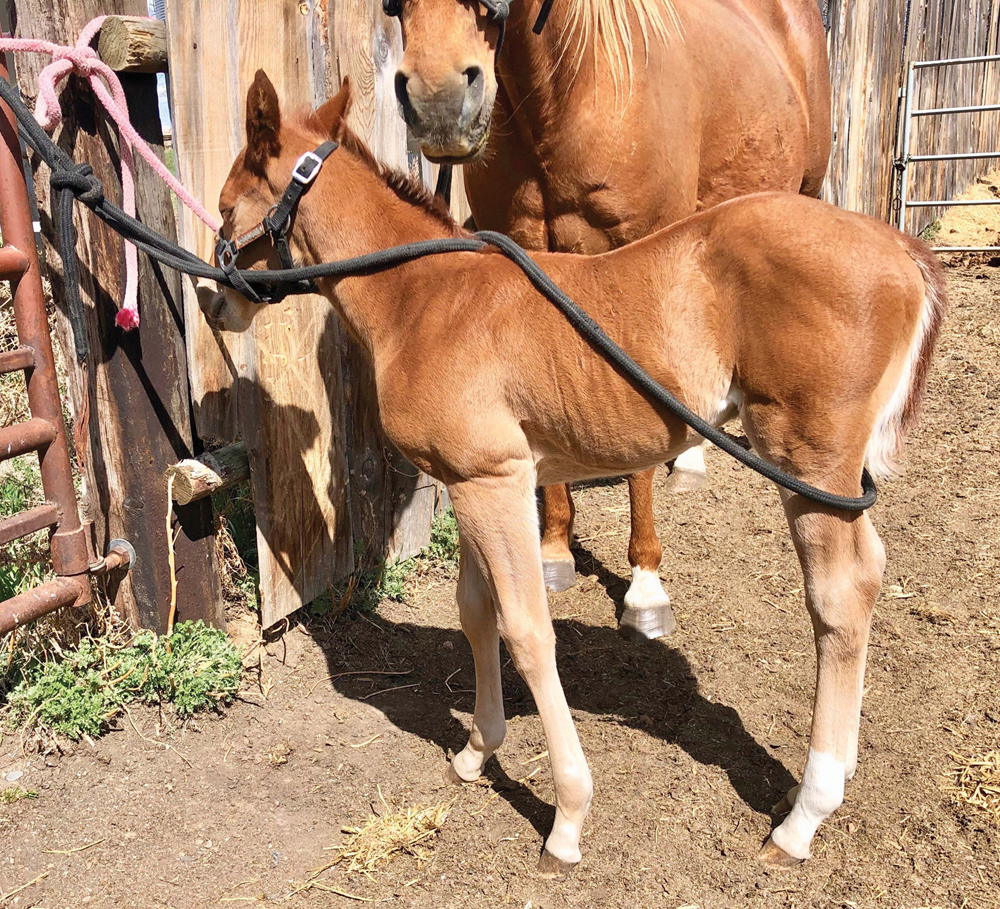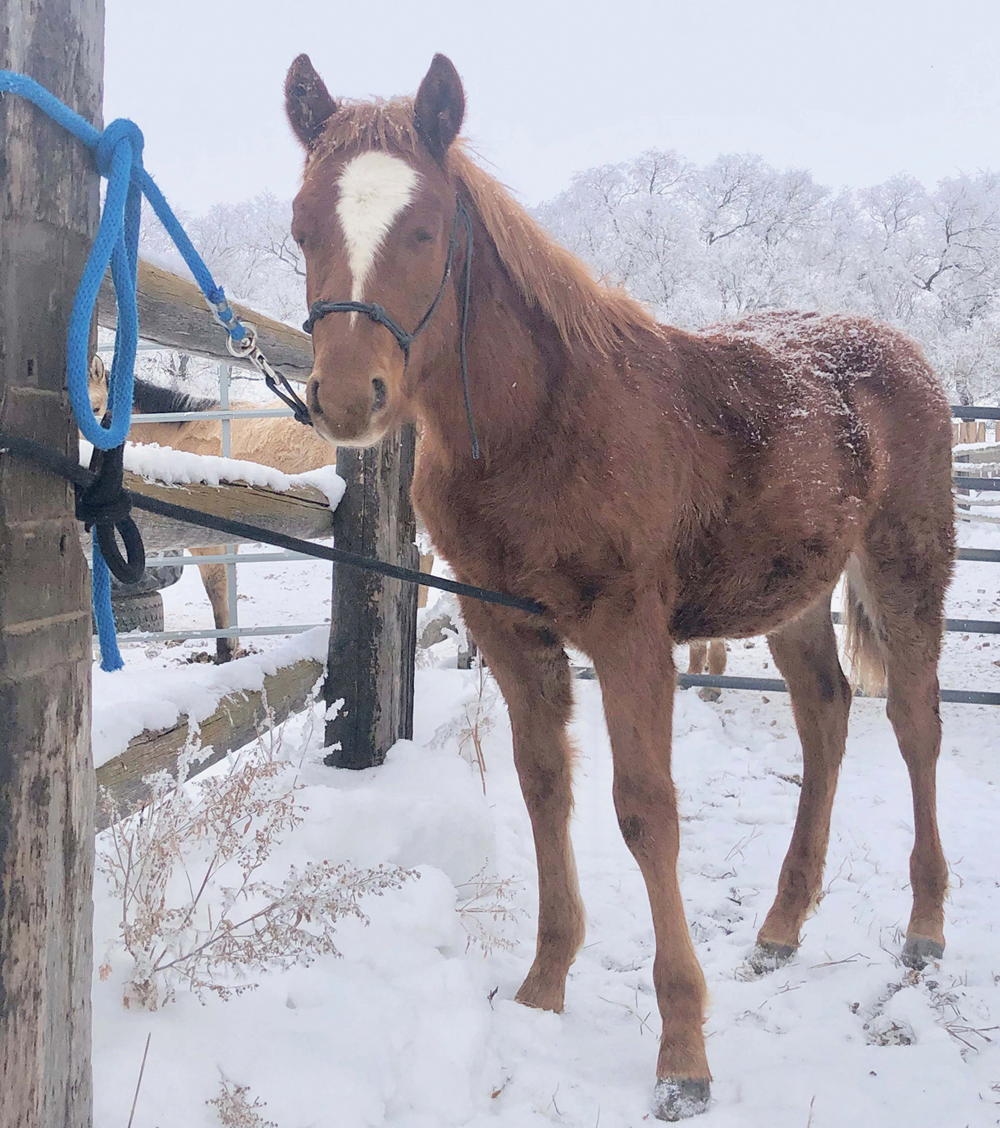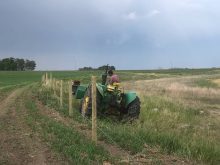It’s a great frustration to have a horse you cannot trust to stand quietly when tied. Some horses learn bad habits later in life, but many have never been given a good foundation as foals.
We teach our foals to stand tied right after they learn to give to pressure on the halter, and they trust us to pick up and handle their feet.
Horses have fragile necks and it can be very harmful for them to put all their weight on their heads and necks as they “set back” — pull back when tied up. It is common to hear of a horse having chiropractic issues that cause them to misbehave or to not be sound. Some of these issues may come from setting back.
Read Also

Harvest wraps up and fall work begins
At the Eppich famly ranch in western Saskatchewan, the fall harvest was successful with few breakdowns, cows and calves have been sorted and a new tractor has arrived
The best way to teach a foal to be tied is often with its mother. If my mare is very quiet, I will tie her foal right beside her, often to the same post. If the mare is a little more skittish or nervous, I tie the foal right over the fence from her so that it is drawn forward to her. You don’t want your mare to be nervous and cause the foal to set back.

Early on, I never tie the foal to a post by the halter alone. Usually I begin with the foal in a figure-eight rump rope. I take a 10- to 12-foot rope and while holding both ends in my hand, I place the loop over the foal’s rump. Then I cross the tails of the rope over its withers and then put the tails of the rope through the back of the nosepiece of the halter. If the rope is long enough, I tie the tails around the post. If the tails are not long enough, I tie the tails together and use another rope to go around the post.
This setup puts all of the foal’s weight on the rump rope if it should decide to set back. If the mare is near or in front of the foal, it will usually try to move toward her. In doing so there is little if any backward pressure against the rump rope.
When I am teaching any horse to tie for the first time, I don’t have it tied for very long and I never leave it unattended. I do take the opportunity to desensitize the foal to me as I keep talking and walking around behind it. I start from several feet away and then work my way closer until I can walk all the way around the foal while it is tied.
If I am dealing with a bigger weanling or even a full-grown horse and I don’t have a rope long enough to make the figure-eight rump rope work, I use a body rope instead. With the body rope you put the rope around the horse’s girth and tie a non-slip knot. You should be able to put your full hand between the rope and the horse’s side, ensuring that it is not too tight but also not too loose. Next, rotate the rope so that the knot is directly underneath its belly, and bring the tail of the rope in between its front legs. Then tie the body rope directly to a post. Tie the lead rope to the post as well but make sure that the halter rope is a little longer so that the horse is only putting pressure on the body rope if it decides to set back.
It is important to keep the horse safe in case it does set back, but the way to teach it not to is simply experience. If a horse pulls back and gets hurt, it will associate the act of being tied with being hurt. Also, if a horse should set back and breaks the rope or the snap and gets away, it will likely do it again.

Take time to tie the foal for longer and longer periods. Tie it in different situations and environments. Challenge the foal. If you find something that upsets it, work on it so that the foal learns that setting back is never the answer. Soon it will learn to stand quiet no matter where or for how long.
Foal Training Part 1: Putting a halter on a foal
Foal Training Part 2: Getting foals used to handling their feet
Foal Training Part 4: Training a horse to load in a trailer
















